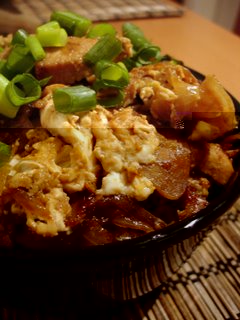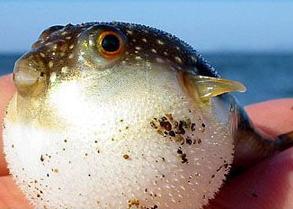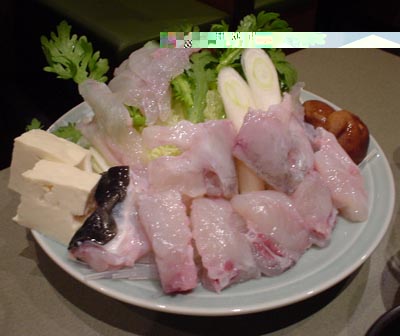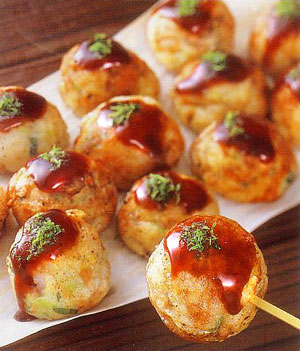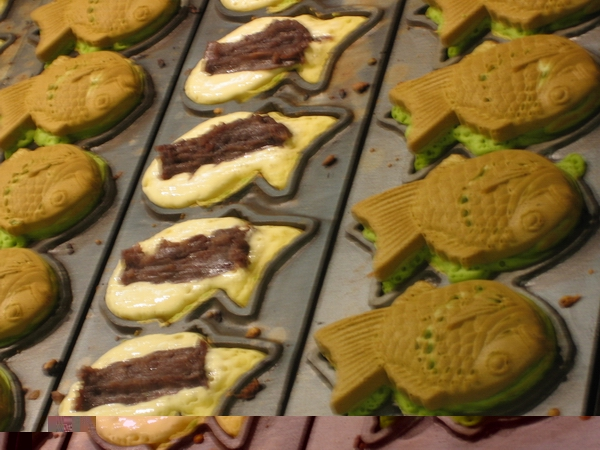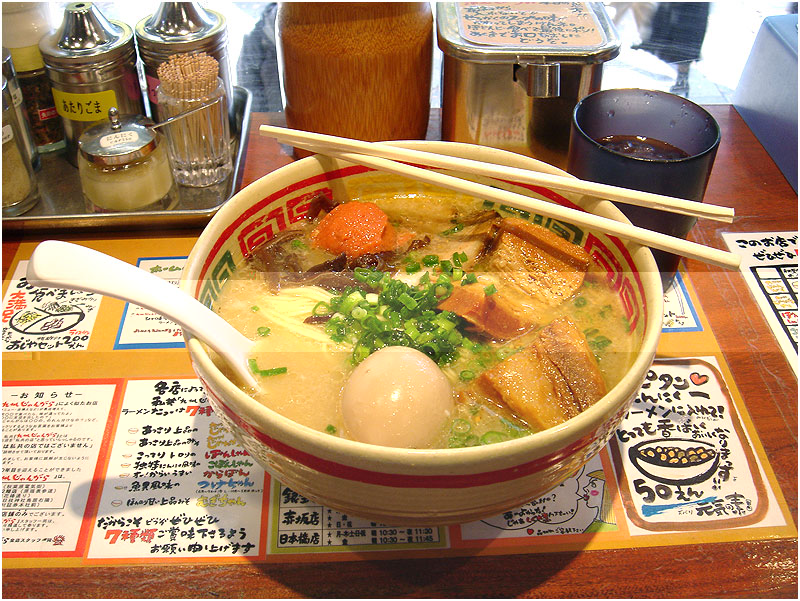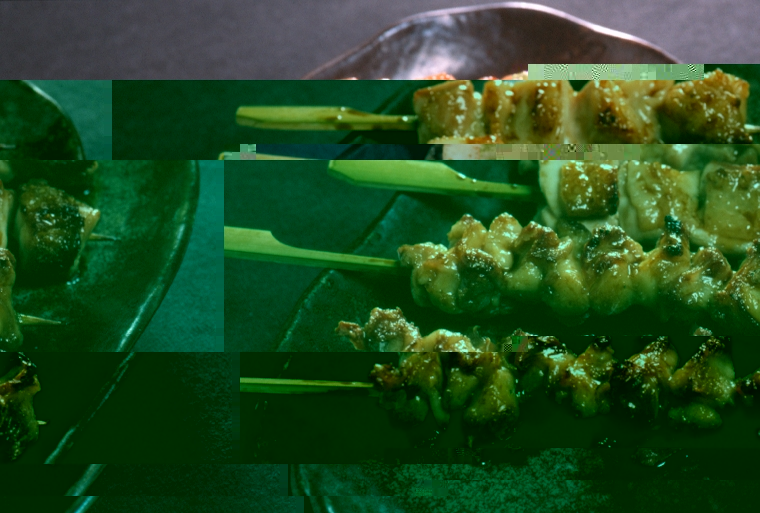|
Okonomiyaki- Loved throughout the ages in Japan, "Okonomiyaki" is often described as a "Japanese-style pizza" and is a dish that is especially popular in Osaka. Fresh vegetables, meat, fish and/or shellfish are blended into the batter that is used as a base, and that mixture is then poured onto the griddle. Once it is cooked, a special sauce - together with mayonnaise - is brushed on top, a further topping of dried bonito or seaweed is applied. The taste of the Japanese people, Okonomiyaki is something everyone should try at least once. This is one of my favorite dishes introduced to me by a friend in Osaka. My favorite chain retaurant is "Fugetsu."
Donburi - a
bowl of rice served with a topping. The topping served on each
donburi is reflected by its name in the menu–for example, in the
case of ebifurai (fried shrimp), it is called ebifurai-don. These
can be eaten in places such as shokudo. |
Fugu or blow fish
contains deadly poison, but despite the risk, fugu dishes remain as
delicacy in Japan. The kanji (Chinese characters) for fugu
interestingly means"river pig." Every Year, 40 different kinds of
blow fish are caught and cultured in Japan and 10000 tons of blow
fish are consumed. If you are interested in eating Fugu,
Shimonoseki-city in Yamaguchi is the place.
There is an old expression : "I want to eat fugu, but I don't want to die" in Japan. Since fugu's poison can lead to instantaneous deaths of diners, only licensed cooks are allowed to prepare fugu(three years of training). The poisonous parts of fugu differ, depending on the kind of fugu. However, because of the strict regulations, the number of deaths is decreasing. Fugu dishes are usually quite expensive. One meal can cost between $100 to $200 a person at a famous restaurant but there are also inexpensive fugu dishes that range from $15 to $20. It's said that the most poisonous fugu, "Tora-fugu," is the most delicious and can cost over one hundred dollars at a fish market. Nowadays, prepared-fugu are sold at grocery stores and online and fugu are eaten in Japanese homes. The most common way of preparing fugu is sashimi but there are many ways to prepare it. It is good to note that winter is the best season to eat fugu. This is something I really want to try one day. |
|
Takoyaki (たこ焼き or 蛸焼) or fried or baked octopus balls is made of batter, diced octopus, tempura scraps , pickled ginger, konnyaku, and green onion, topped with okonomiyaki sauce, green laver (aonori), mayonnnaise, and katsuobashi (fish shavings), originating in Osaka. Making takoyaki requires aa special frying pan made of cast with hemispherical molds. Although takoyaki can easily be made at home if the equipment is available, it is usually considered to be fast food and mostly sold on the streets. Frozen takoyaki are also sold, and there are restaurants in which customers can cook their own takoyaki at their tables. Takoyaki is especially popular in the Kansai area, but has risen in popularity all over Japan. In the Kansai region, takoyaki is eaten as a side dish with a bowl of cooked rice. Elsewhere in Japan, it is eaten without rice as a snack food. |
Taiyaki (鯛焼き) or "baked sea bream" is a Japanese fish-shapedcake. The most common filling is red bean paste that is made from sweetened azuki beans. Other common fillings are custard, chocolate and cheese. Taiyaki is made using taiyaki or regular pancake waffle batter. The batter is poured into a fish-shaped mold for each side. The filling is then put on one side and the mold is closed. It is then cooked on both sides until golden brown. Taiyaki was first baked by a sweet shop Naniwaya in Azabu in Tokyo during 1909 and now can be found all over Japan, especially at Japanese festivals. It was also the theme of a 1975–76 Japanese hit single, "Oyoge! Taiyaki-kun" ("Swim! Taiyaki") sung by Masato Shimon. |
|
Ramen is a noodle dish that was originally imported to Japan from China. Over the last few decades, however, ramen has become a typical Japanese dish and gained great popularity inside and outside of Japan. Ramen noodles are about as thin as spaghetti and are served in a soup with various toppings. There are many different ramen dishes differing in the soup base and the toppings: Some of the most popular soups:
|
Yakitori (焼き鳥 やきとり), means grilled bird. It is made from several bite-sized pieces of chicken meat, skewered on a bamboo skewer and barbecued, usually over characoal. Yakitori is a very popular dish in Japan. It is also a common, cheap accompaniment to beer in izakayas. (restaurant/bars) Strictly speaking, the term "yakitori" refers to grilled (yaki) bird (tori), although yakitori usually refers to grilled chicken. Similarly skewered grilled food made with other ingredients such as beef, pork, fish or seafood is usually available at yakitori restaurants and are known as kushiyaki (串焼,) or skewer grill. |

